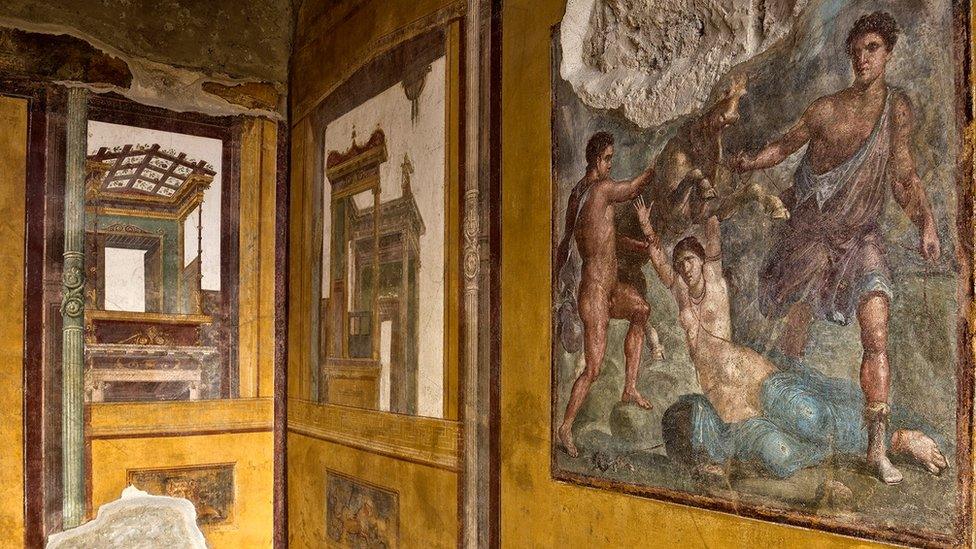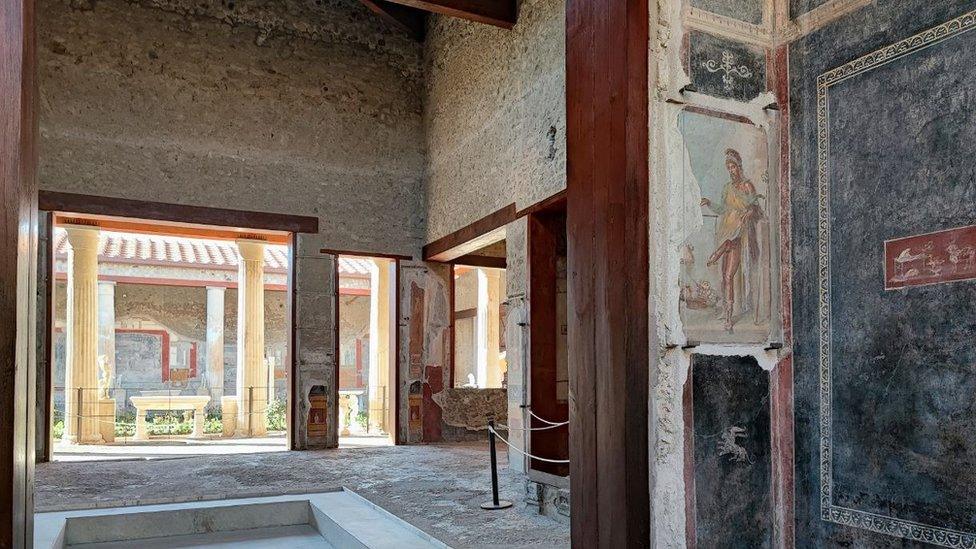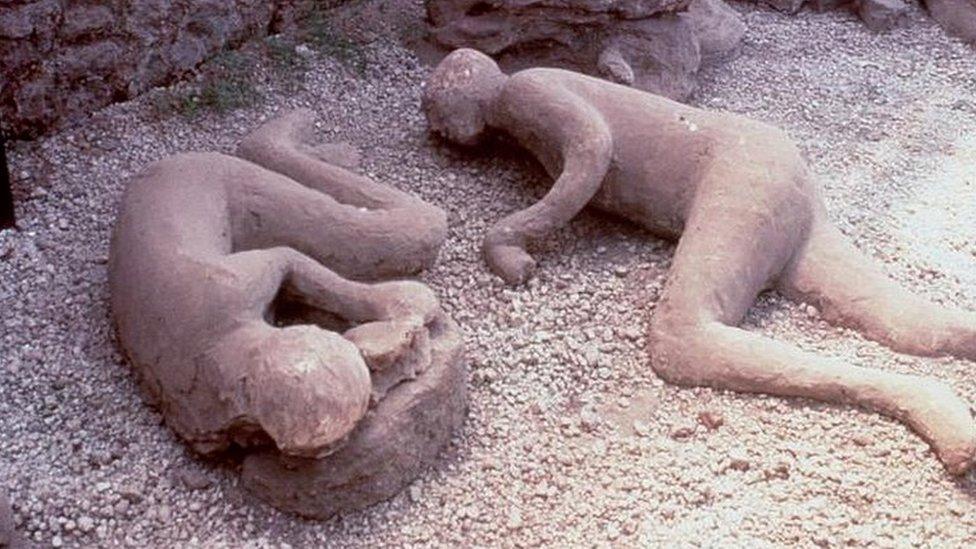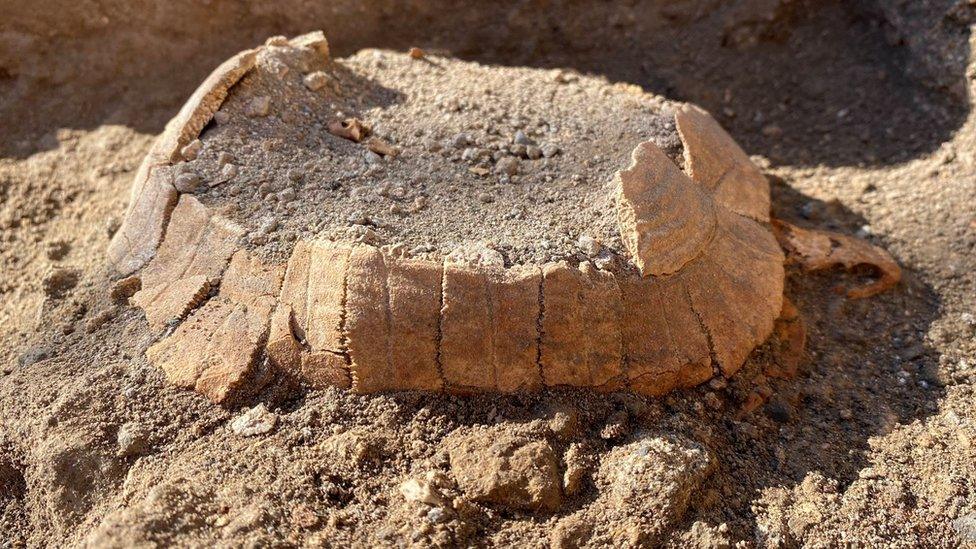House of the Vettii: Pompeii home owned by former slaves reopens
- Published

The ancient house, with its famed frescos and 12 mythological scenes, has been restored
The House of the Vettii, known as Pompeii's Sistine Chapel, has reopened to the public for the first time in 20 years after an extensive restoration.
The house, built in the second century BC, was buried in the eruption of Mount Vesuvius in AD79.
It was named after its owners, the Vettii brothers, two former slaves.
Aulus Vettius Conviva and Aulus Vettius Restitutus got wealthy by selling wine after they were freed.
Adorned in mythological frescos and phallic sculptures, the house reopened on Tuesday after years of restoration work.

In the painting, Priapus can be seen weighing his own phallus against a bag of money
Excavation works carried out between late 1894 and early 1896 showed that the ancient Roman townhouse, built on top of the ruins of an earlier house, had survived the eruption of Mount Vesuvius.
"The owners, freedmen and ex-slaves, are the expression of a social mobility that would have been unthinkable two centuries earlier," said Gabriel Zuchtriegel, director of the Archaeological Park of Pompeii.
He added that the brothers became rich by trading agricultural products from the surrounding area in Pompeii - but added that prostitution was also practiced in their house.
In the house, the Greek god of fertility and abundance, Priapus, is depicted in a fresco weighing his own phallus against a bag of money.
Ornate furnishings inside the house, as well as Greek and Roman sculptures in bronze and marble, offer a glimpse into the lifestyle of the elite.
Related topics
- Published26 May 2022

- Published24 June 2022
